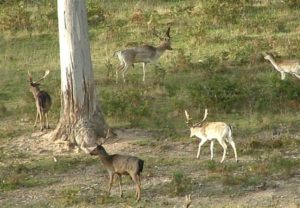Wild deer control
Wild deer can impact on agricultural production and the environment if their populations are not managed. There are six species of wild deer in Australia: fallow, red, hog, chital, rusa and sambar. The main methods of wild deer control include trapping, ground and aerial shooting, and fencing. Shooting as a method of pest control is undertaken by a wide range of people. This includes government vertebrate pest control officers, landholders and licensed shooters. Standard Operating Procedures (SOPs) have been developed to guide people undertaking wild deer control. Ground shooting is humane and very target specific and can be used to control wild deer. It can work in collaboration with other pest control techniques to reduce the impacts and populations of wild deer across larger areas. Shooting can be conducted both during the day and night. Various techniques of shooting such as the use of spotlights, night or thermal vision, and locating deer with trained gundogs can be employed to increase the efficiency of wild deer control activities*. Shooting can be an expensive option if landholders need to employ a full-time, part-time or contract professional shooter/s. If shooting is conducted at no-cost by accredited volunteer shooters, it then becomes one of the cheapest pest control techniques available. Landholders can then use costs saved by utilising volunteer shooters to fund other complementary pest management tools.Act now!
The SSAA Farmer Assist program enables landholders to find licensed, accredited and insured volunteer shooters to assist with wild deer control. We have thousands of qualified members across the country ready to help landholders and managers with wild deer control. It only takes a few minutes to register for the SSAA Farmer Assist program so you can find friendly and willing volunteers to assist you with your wild deer problem.
